Moody Blooms For Spring: 8 Types Of Black Flowers To Add Drama To Spring Displays
From midnight burgundies to inky violets, several types of black flowers can enrich and embolden a spring display. Try these brooding bloomers for a moody garden

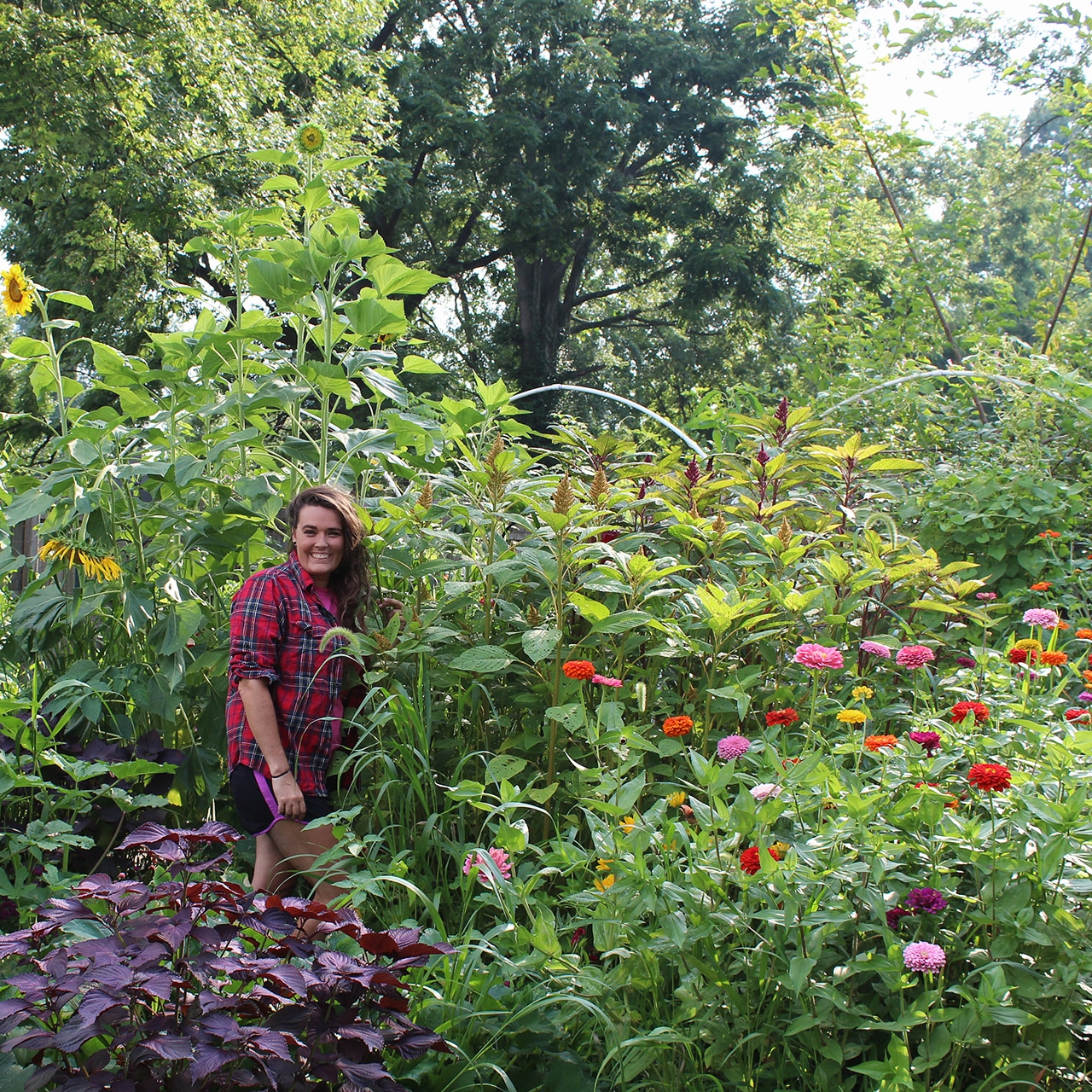
The arrival of spring marks a period of rebirth and rejuvenation. Many of us are drawn to traditional pastel shades, classic whites, or vibrant pops of color in celebration of new plants and new life. That said, dark flowers continue to gain popularity and can add sophistication, mystery and depth to both classic and contemporary garden themes. Many types of black flowers, dark burgundies and deep purples are especially well-suited to supporting growth in the spring garden.
When we think about growing plants for color, these darker tones are capable of high impact, drama and intensity. They can also help to unify other color schemes we might have in play. Here are some of the most alluring and easily available black flowers that can add dramatic appeal to an early season landscape.
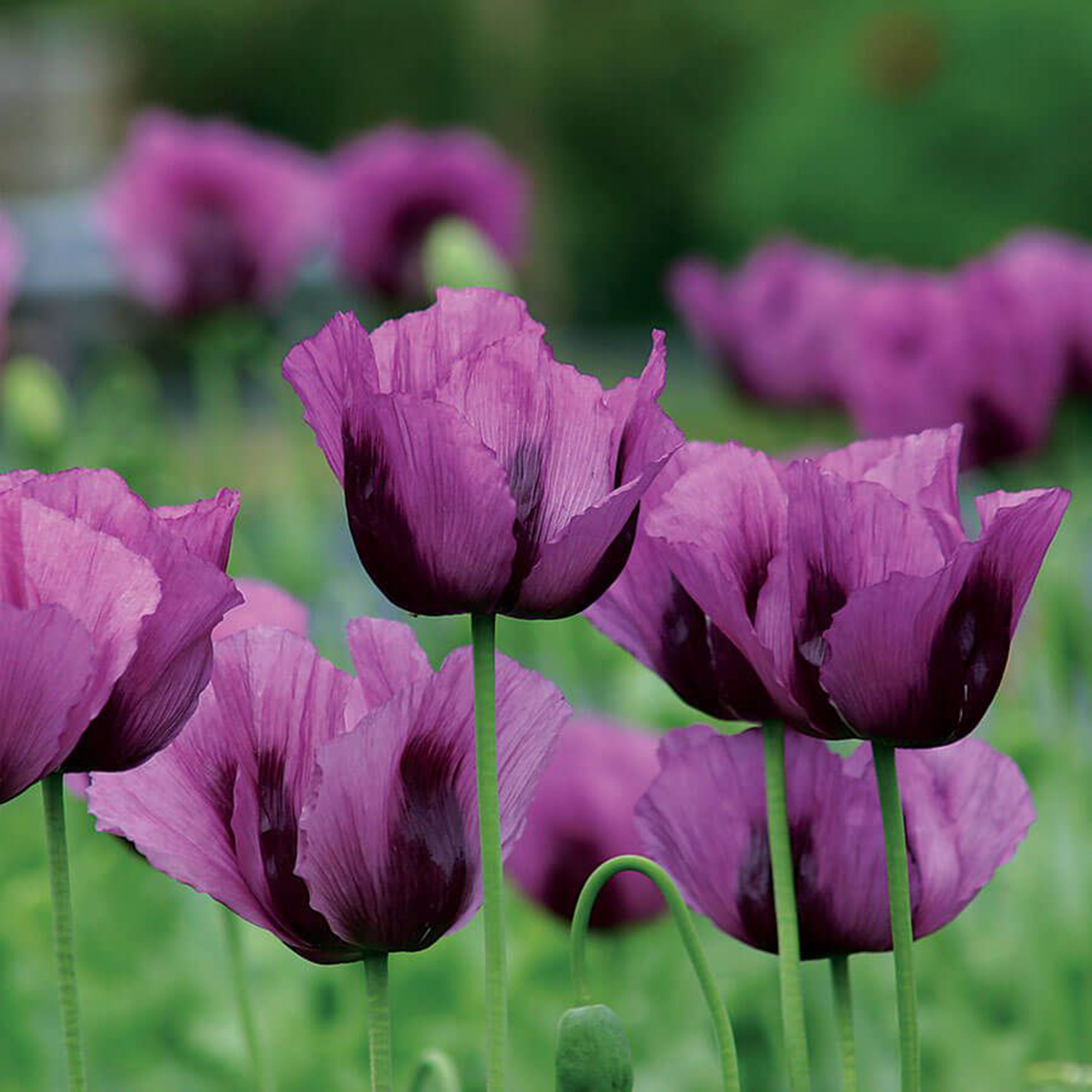
For lovers of dark plants, these poppies create a lush mystique and saturated depth alongside black florals. Grab your seeds in the Gardening Know How Shop.
Choosing Black Spring Flowers for Your Garden
Black flowers are impactful for a variety of reasons, most notably, their unexpected ability to create visual contrast and draw the eye throughout the garden. This makes them ideal for use in containers, near high-traffic areas, and even in larger beds.
Anyone hoping to add these plants alongside more colorful early spring flowers, or use them as the basis for dedicated black flower gardens, should consider that there are few ‘true blacks’ in nature. Many ‘black’ flowers are actually very deep shades of dark blue, rich burgundy, dark coffee and ultra-intense purple. Still, there is genuine richness and elegance to be found when designing with dark plants. Try some of these uniquely toned varieties to craft truly memorable garden spaces.
1. Dahlias
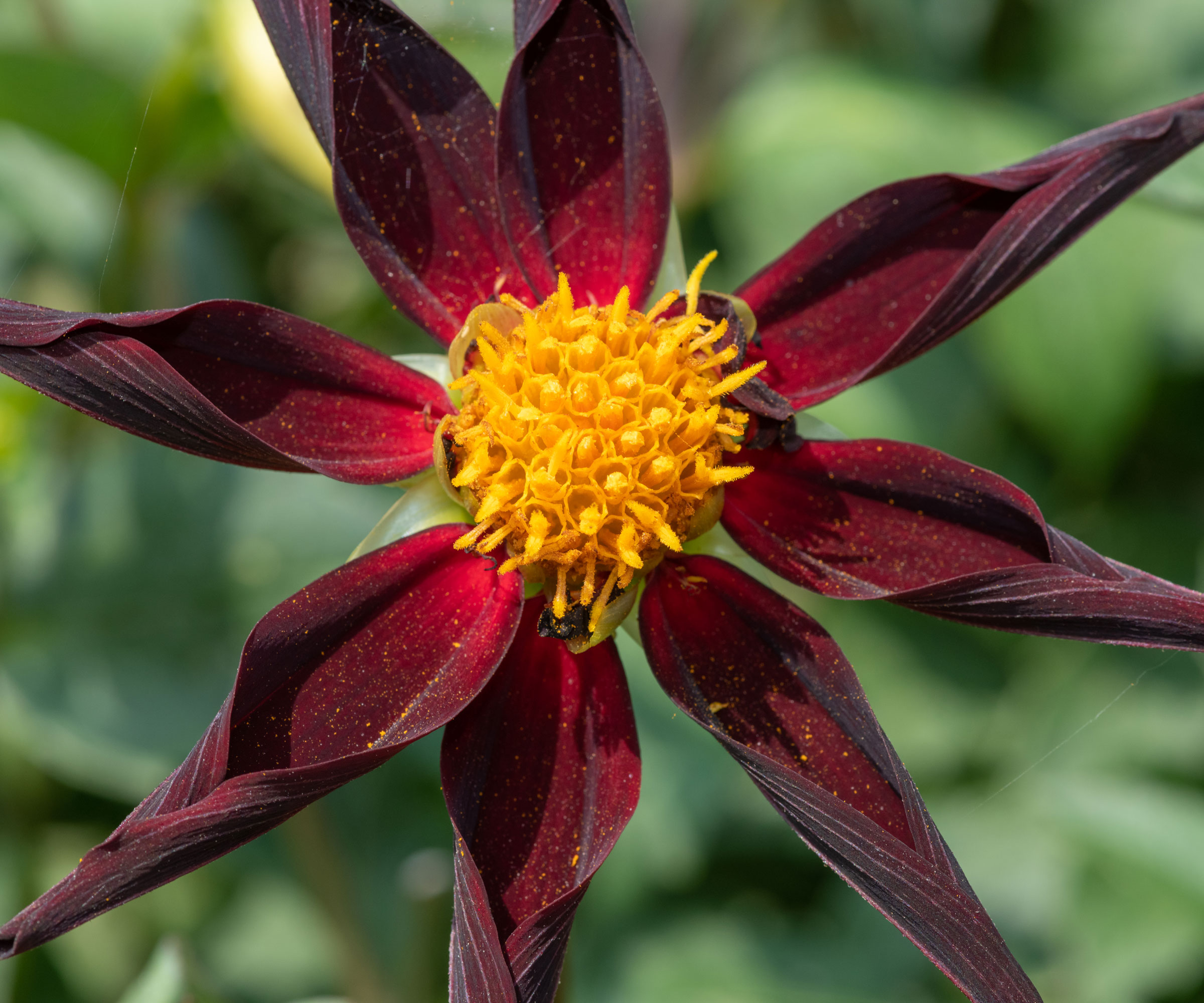
Dark varieties of dahlia offer stunning depths of color and are sure to add mystery to most any flower bed. Most black dahlias actually open in shades of dark red, but vary in appearance, depending upon the light and the folds of their petals. Cactus dahlias and pompon dahlias may both be dark, but look like different shades completely due to their distinct floral structure and shape.
‘Verrone’s Obsidian’ is of special interest, due to its unique flower form. With its pointed petals, tinted burgundy to chocolate, it looks like a dark firework captured mid-explosion. Though most dahlias are hardy to USDA zone 8, they can be grown as an annual in most places.
2. Hellebores
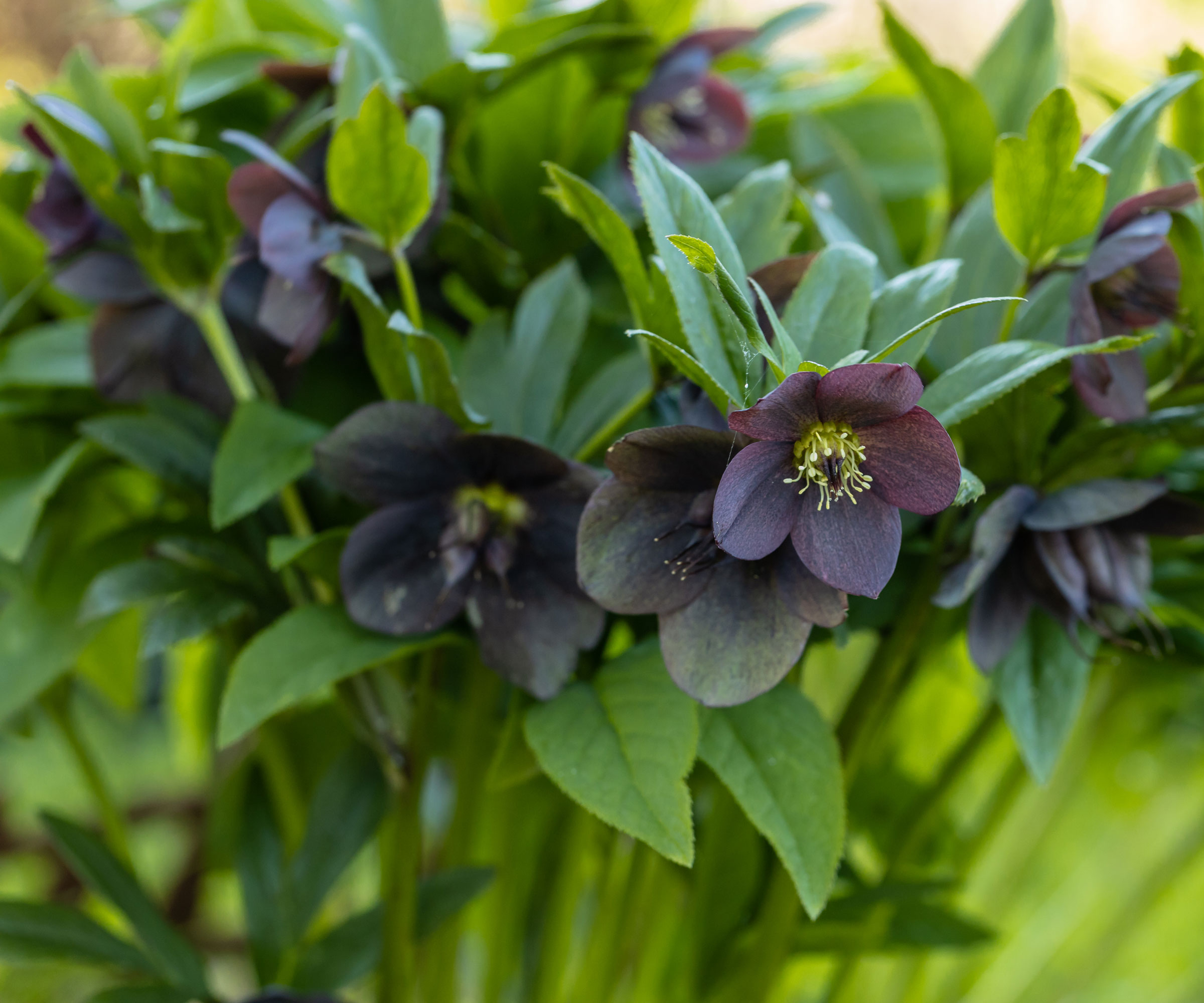
Hellebores are amongst the first flowers to appear in the garden, with most beginning to bloom in late winter. We tend to identify hellebores with shades of pink, cream, green or gold. Varieties such as Champion Green, available in the Gardening Know How Shop, appear almost luminescent in a spring display.
Gardening tips, videos, info and more delivered right to your inbox!
Sign up for the Gardening Know How newsletter today and receive a free copy of our e-book "How to Grow Delicious Tomatoes".
However, it is possible to grow intense darker shades. Hardy to USDA zones 6-9, several varieties open to reveal deep purple-black blooms. It’s easy and rewarding to grow these hellebores in containers or in large numbers along the edge of a wall, if allowed to naturalize. Try ‘Dark and Handsome,’ ‘New York Night’ and ‘Onyx Odyssey’ black hellebore plants.
3. Hyacinth
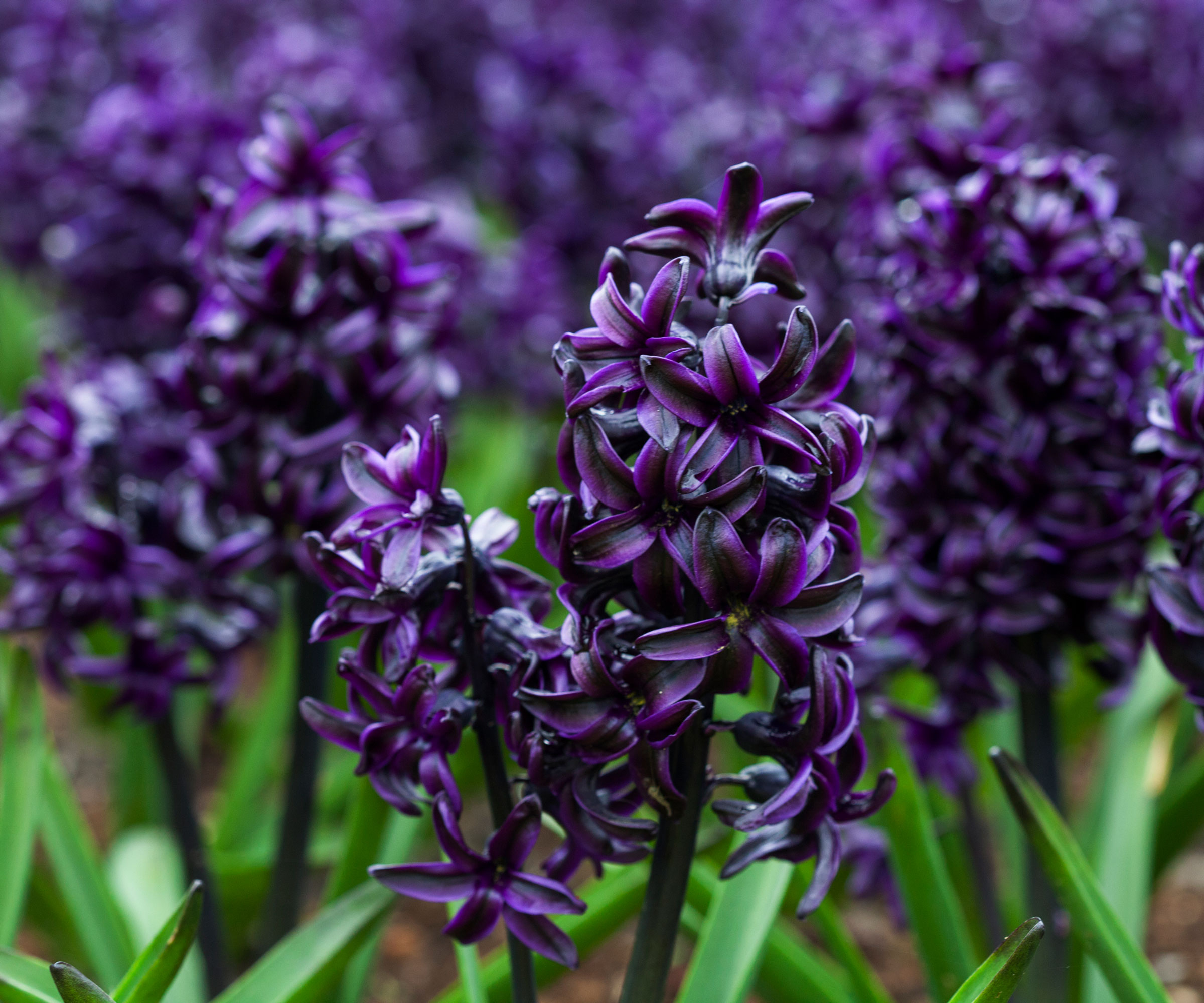
Hyacinths are an excellent addition to the spring garden. After planting hyacinths in fall, you can expect them to appear during winter and early spring. Though the plants are available in a wide range of colors, black hyacinth offers growers a distinctive lustrous sheen that is sure to make an impression in containers and beds. Most black varieties produce highly-saturated purple tones. Moody cultivars such as ‘Dark Dimension’ and ‘Midnight Mystic’ are especially popular.
4. Irises

Though pure blacks are uncommon in most species, iris plants are an exception. A large number of black iris cultivars are available that present with no obvious red, purple, blue or brown hues. Larger, bearded iris types are especially prized for their color and dramatic floral displays.
Plants require only a little care and are tolerant to the cold, performing well in USDA zones 3-9. This makes them ideal for pots and low-maintenance beds. Exceptional varieties of black iris to grow include ‘Awakening Embers,’ ‘Before the Storm,’ ‘Ghost Train’ and ‘Raven Girl’ cultivars.
5. Lilies
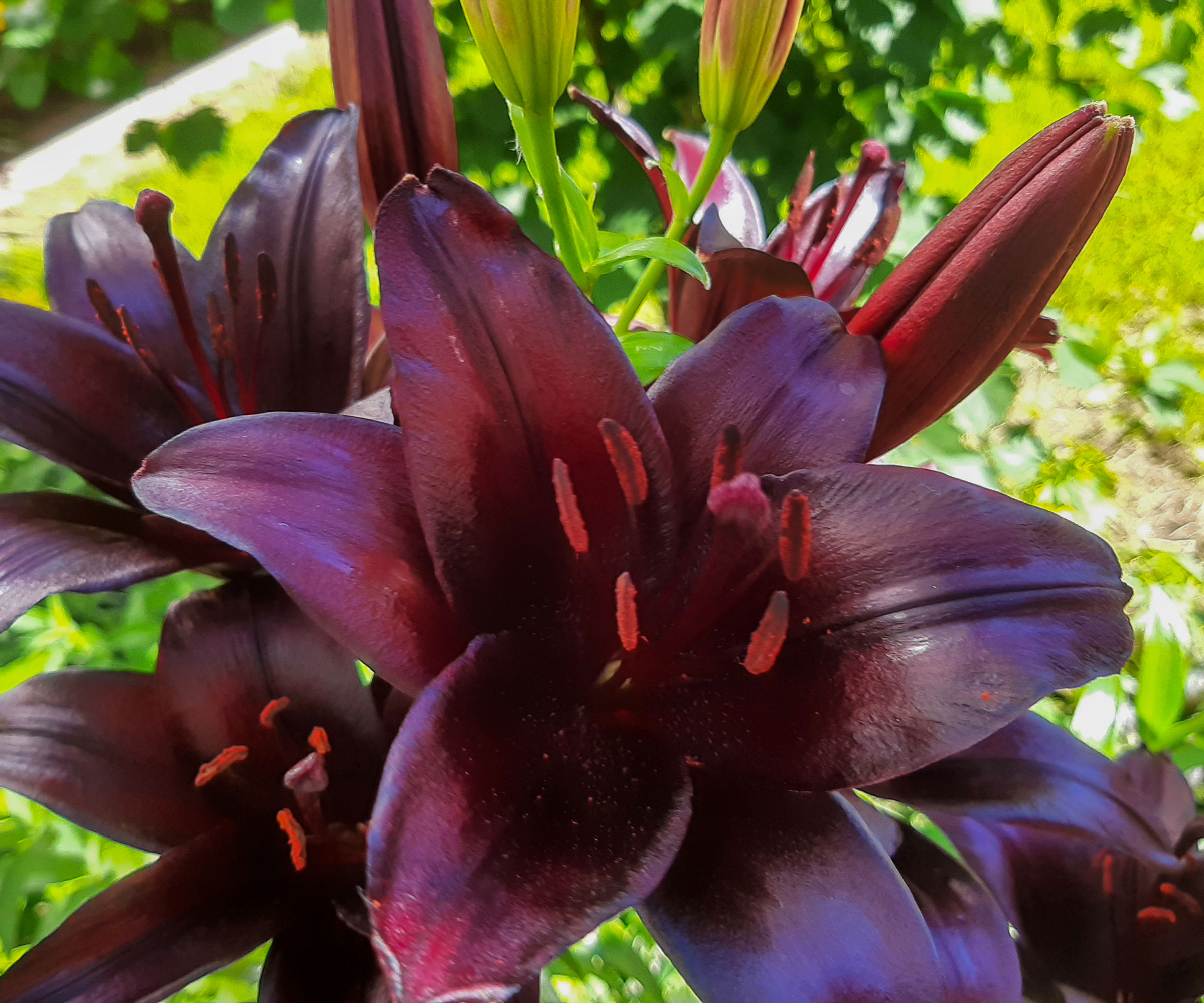
The term ‘lily’ can be used to describe a variety of lily species, including those that are not true lilies (including calla). However, in their various guises, they can add real grandeur to the spring landscape, and should bloom early in the growing season.
Though each plant’s hardiness range will vary slightly, most will return seasonally, producing appealing foliage and black flowers. Common cultivars of black lily plants include ‘Blackstone’ and ‘Nightrider’ Asiatic lilies, as well as ‘Odessa’ calla lily.
6. Pansies
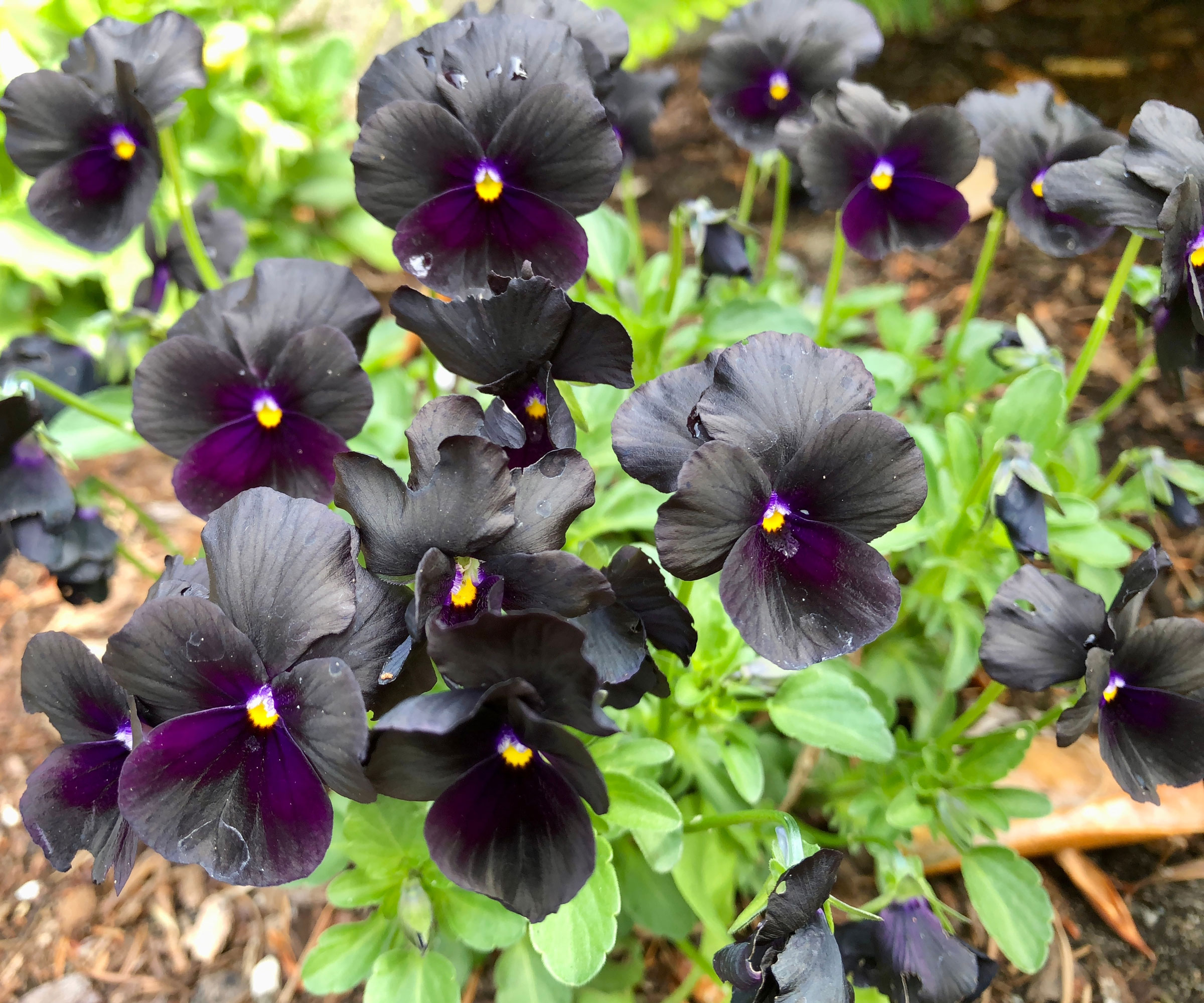
Pansies have long been used in containers and bedding planting, due to their early bloom time and ease of growth. Black pansies are no exception, and are highly sought-after for their intense color.
Often considered amongst the deepest shades available, varieties like ‘Black Devil’ and ‘Halloween II’ are sure to leave a lasting impression. For extended displays, you can grow pansies by sowing seeds in both spring and fall, depending upon your region.
7. Petunias
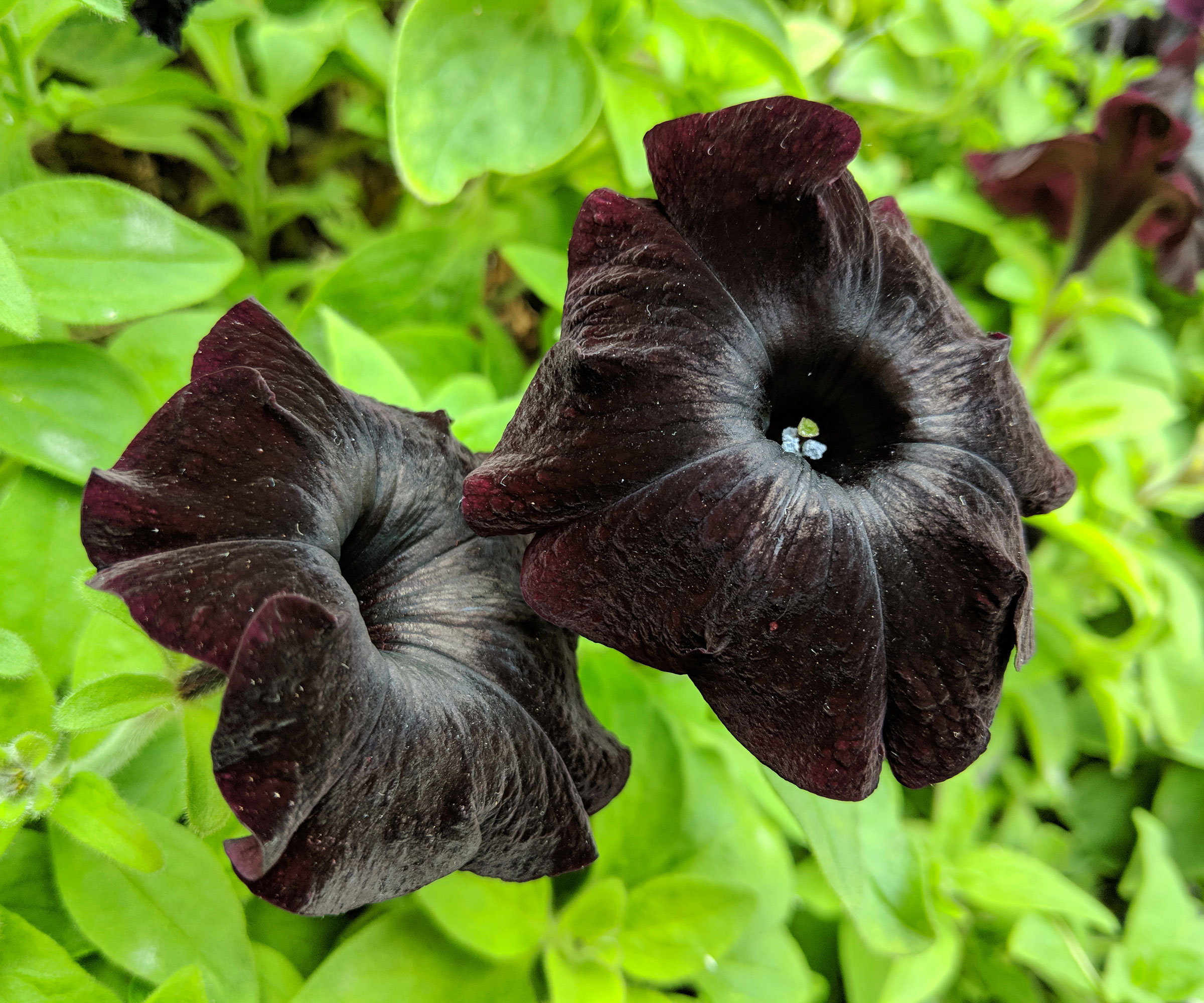
Another popular bedding option, petunias are beloved for their ability to set buds all season long. Dependable and long lasting, they are ideal for containers and hanging baskets. A profuse blooming habit gives varieties such as Tidal Wave Red Velour, available in the Gardening Know How Shop, its name!
Still, black petunias are also attractive, especially when interplanted with other varieties or grown in large groups. Increased interest in darker tones has led to expanded availability at garden centers each spring. If you wish to grow petunias on this end of the spectrum, try ‘Black Velvet,’ ‘Pinstripe’ and ‘Phantom’ varieties.
8. Tulips
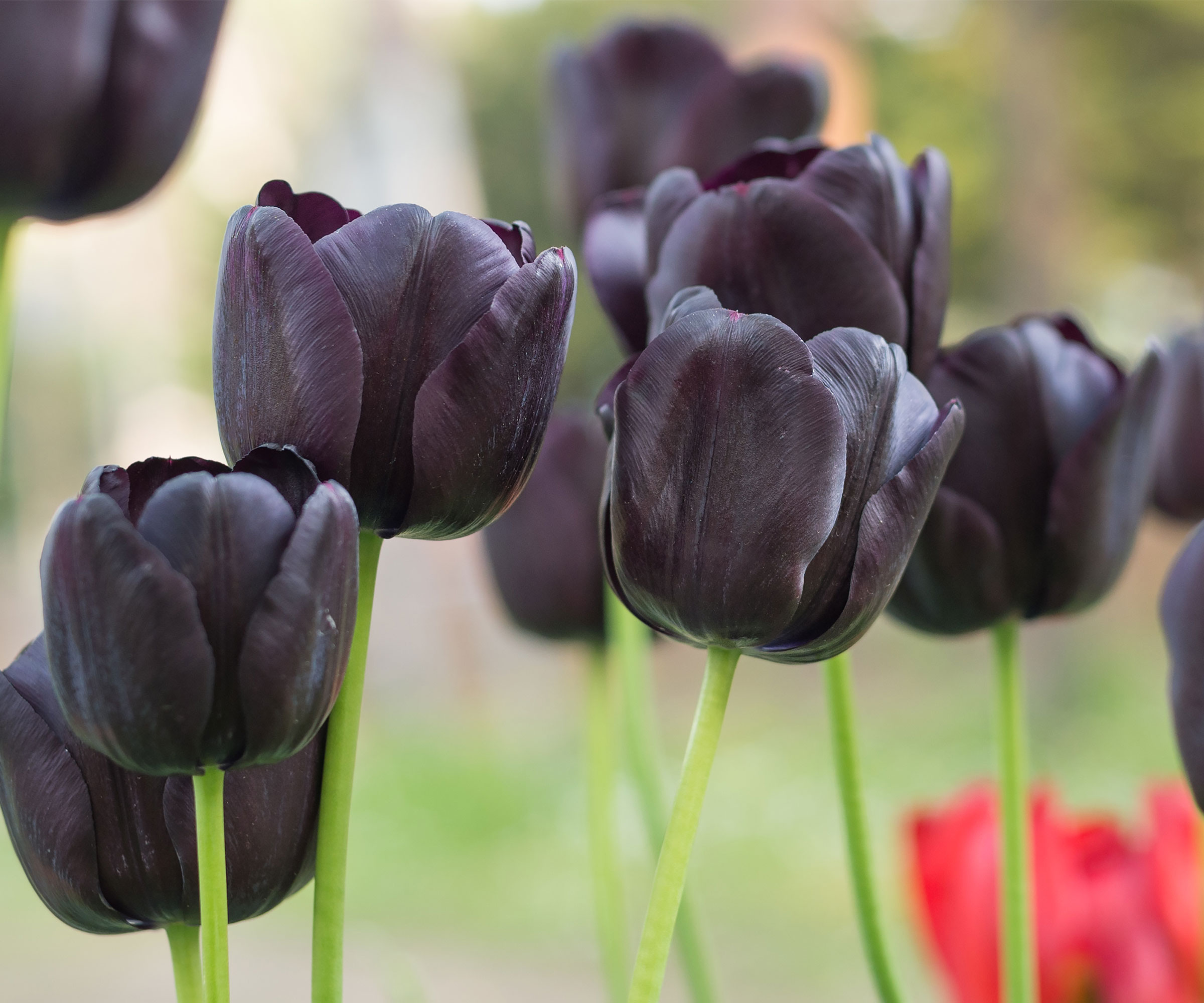
Grown in USDA zones 3-7, tulips are amongst the most popular spring flowers. Though pastel colors are often considered a seasoned favorite, darker cultivars can be used to add allure, contrast and shimmering intensity to growing spaces.
Most black tulips open in varying shades of deep purple. However, light conditions within the garden can greatly impact the way the color is perceived. This often results in a distinct, jet-black appearance. Varieties like ‘Black Hero,’ Black Parrot,’ and ‘Queen of the Night’ are especially lush in spring beds and borders.
Frequently Asked Questions
Which Flower Colors Go Well With Black?
Choosing companion plants will depend upon the gardener’s desired effect. Those hoping to create cohesive spaces often choose blooms that are complementary. Contrasting colors draw attention to the space and create a dynamic appearance. Whites, creams, lilacs, pale greens and golds can all help to accentuate the lush tones of your black flowers, giving them definition and focus.
What do Black Flowers Symbolize?
Symbolism related to black flowers varies. Though certain black flowers, like deepest roses, are thought to provoke feelings of immense love; others may symbolize sorrow, loss or rebirth. Regardless of intention, those who choose to plant blacks are certain to enjoy their lasting beauty.
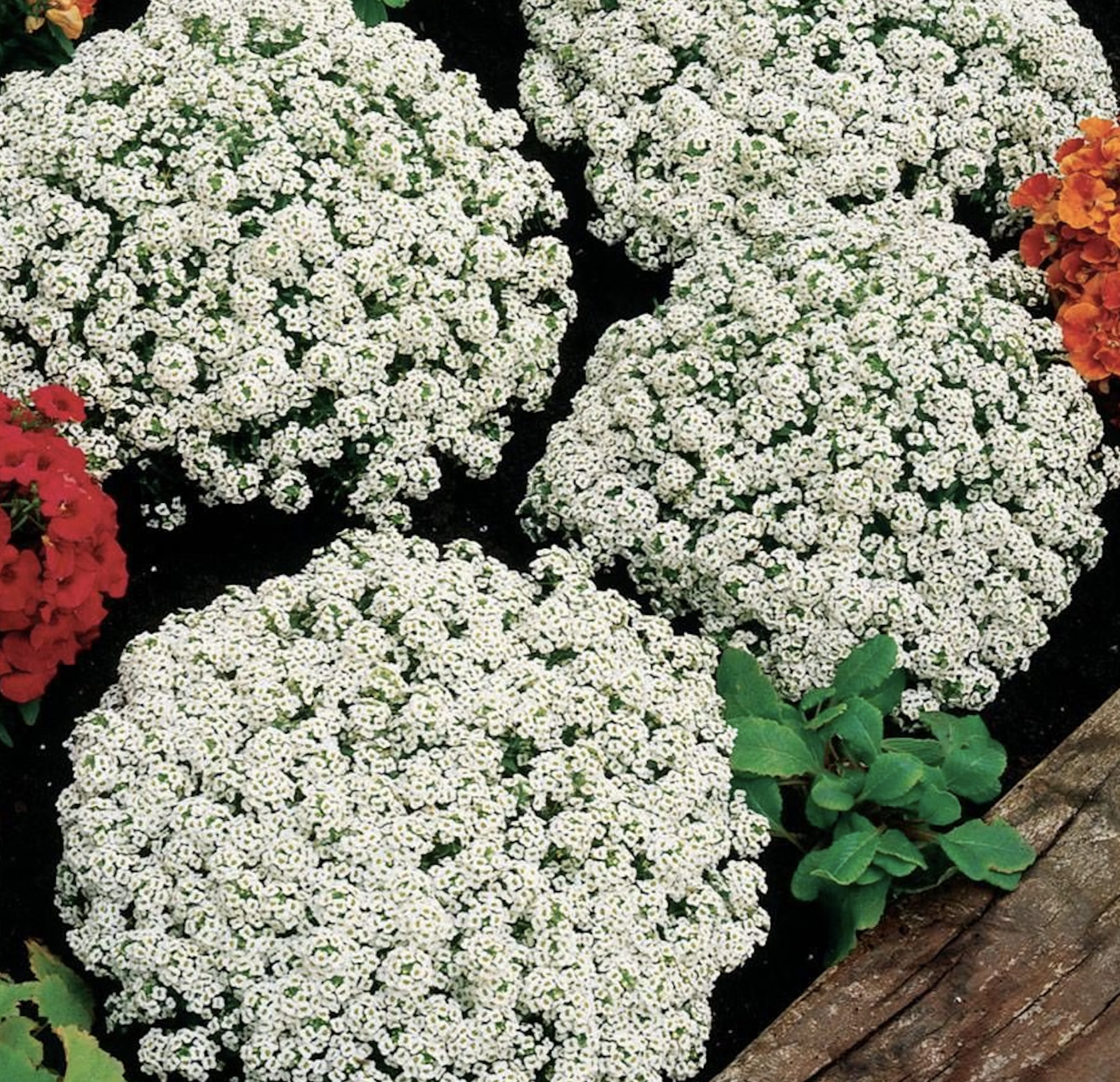
Want the ultimate contrast plant for your black flowers? Sweet alyssum ‘Snow Crystals’ blooms from spring to fall. Get yours in the Gardening Know How Shop.
More Dazzling Ornamental Planting Ideas
- Give your blacks a classic contrast with some of these 12 best white flowers – guaranteed to create a dazzling and iconic impression in your beds and borders.
- For a spot of luxury garden design, partner your blacks with some unusual golden accents. Try some of these unique yellow flowers to add opulence to your displays.
- Fallen in love with moody plants and keen on exploring the dark side? We reveal how the goth gardening trend can add a brooding romanticism to your planting aspirations.
- Grow some on-trend dynamism with cool blues and deep purples – check out our Blue and Purple Plants in the Gardening Know How Shop for a range of striking plant and shrub options.
This article features products available from third party vendors on the Gardening Know How Shop. Keep in mind that our plant inventory is limited - so if you’re thinking of purchasing, don’t wait!

Tonya Barnett has been gardening for 13 years. Flowers are her passion. She has transformed her backyard into a cut flower garden, which she regularly chronicles on her YouTube channel http://www.youtube.com/@tonyawiththeflowers.
-
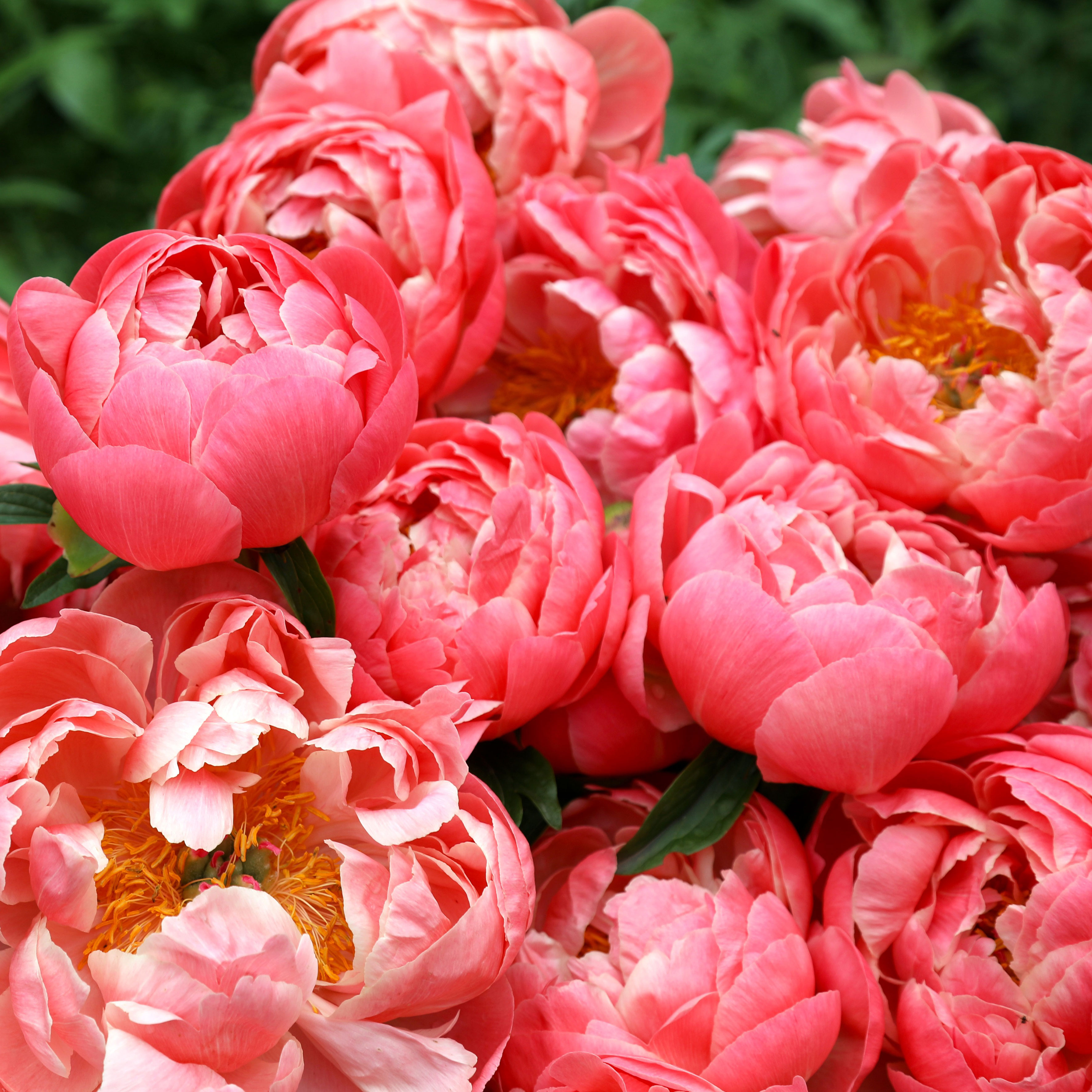 ‘Coral Charm’ Peony Care For Sublime Semi-Double Peonies With Lush Salmon Pink Flowers
‘Coral Charm’ Peony Care For Sublime Semi-Double Peonies With Lush Salmon Pink FlowersPeonies are known for their soft baby pink or magenta tones, but if plushy coral blooms are your thing, here’s our guide to the ultimate ‘Coral Charm’ peony care
By Tonya Barnett
-
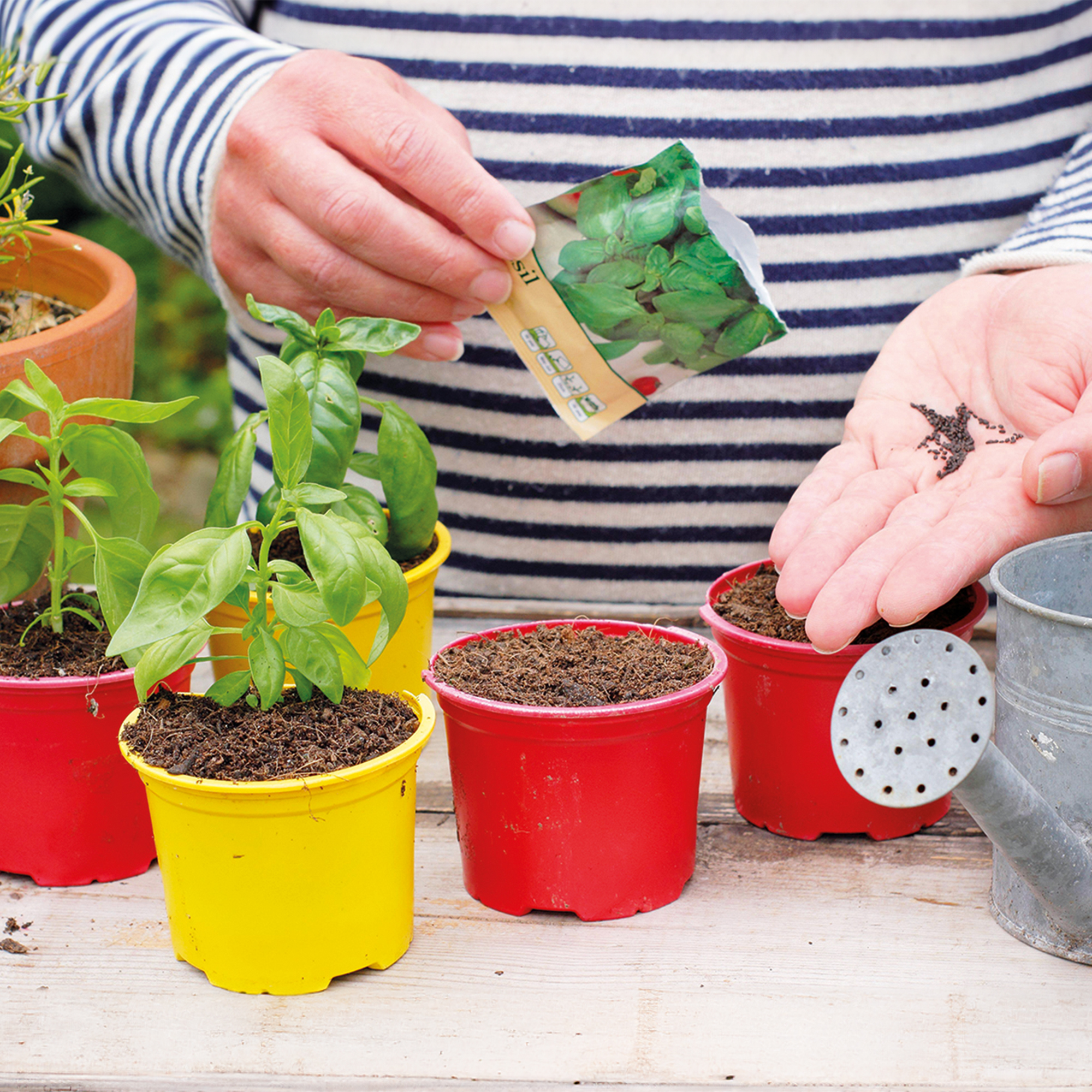 How To Grow Seeds Quickly: 8 Expert Tricks For Fast Flowers & Crops
How To Grow Seeds Quickly: 8 Expert Tricks For Fast Flowers & CropsIt's never too late to start growing! Jump-start your flower or vegetable garden with these pro tips and tricks for germinating seeds in record time.
By Amy Grant